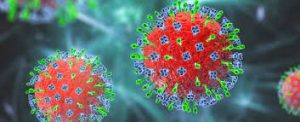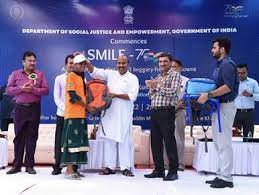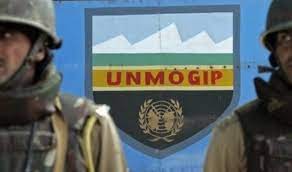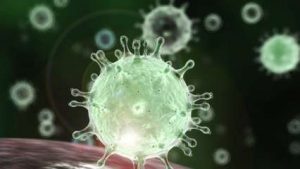Today Current Affairs: 13th August 2022 for UPSC IAS exams, State PSC exams, SSC CGL, State SSC, RRB, Railways, Banking Exam & IBPS, etc
Table of Contents
Butterfly Mines:

The UK Ministry of Defence, in its intelligence assessment of the ongoing war in Ukraine, has and sounded an alarm on the possible use of PFM-1 series ‘Butterfly Mines’ by the Russian military in Donetsk and Kramatorsk.
- The PFM-1 and PFM-1S are two kinds of anti-personnel landmines that are commonly referred to as ‘Butterfly mines’ or ‘Green Parrots’.
- These names are derived from the shape and colour of the mines.
- The main difference between the PFM-1 and PFM-1S mine is that the latter comes with a self destruction mechanism which gets activated within one to 40 hours.
- The ‘Butterfly mine’ has earned a reputation for being particularly attractive to children because it looks like a coloured toy.
- It is very sensitive to touch and just the act of picking it up can set it off.
- Because of the relatively lesser explosive packed in this small mine, it often injures and maims the handler rather than killing them.
- These mines are also difficult to detect because they are made of plastic and can evade metal detectors.
National Intellectual Property Awareness Mission:

National Intellectual Property Awareness Mission (NIPAM) has achieved target of imparting Intellectual Property (IP) awareness and basic training to 1 million students on 31st July 2022, ahead of the deadline which was 15 August 2022.
- NIPAM, a flagship program to impart IP awareness and basic training, was launched on 8 Dec 2021 as a part of “Azadi Ka Amrit Mahotsav” celebrations.
- The program is being implemented by Intellectual Property Office, the Office of Controller General of Patents, Designs and Trade Marks (CGPDTM), Ministry of Commerce and Industry.
- During the period 08 December 2021 to 31st July 2022, the following milestones achieved:
- of participants (students/faculty) trained on IP = 10, 05, 272
- Educational institutes covered = 3662
- Geographical coverage = 28 states and 7 Union Territories
Langya Henipavirus:

Almost three years after the novel coronavirus was detected in China, a new zoonotic virus has been discovered in the country’s two eastern provinces with 35 infections identified so far. This new type of Henipavirus is also being called Langya Henipavirus or the LayV.
- The newly discovered virus is a “phylogenetically distinct Henipavirus”.
- Henipaviruses are classified as biosafety level 4 (BSL4) pathogens.
- They can cause severe illness in animals and humans, and as of now there are no licensed drugs or vaccines meant for humans.
- The types of Henipaviruses that had been identified prior to this included Hendra, Nipah, Cedar, Mojiang and the Ghanaian bat virus. Langya, meanwhile, is known to cause fever.
- Langya’s genome organization is “identical to that of other Henipaviruses”, and that it is closely related to the “Mojiang Henipavirus, which was discovered in southern China”.
Chit Fund:

Rates of GST on the chit funds have been raised from the earlier 12% to 18%. This may raise the borrowing cost and benefits out of the chit fund.
- A chit fund is a close-ended group lending scheme. It is called ‘Chit Fund’ as a piece of paper is used for writing a bid amount, known as a chit.
- It doesn’t fall under the jurisdiction of the RBI but is a legal entity, registered with and regulated by, the state governments under the Chit Funds Act of 1982
- Each member contributes their share to the pool (fixed sum) and the lump-sum amount is given to the one-two win’s the bid or who is in need (but has to pay extra).
- Chit funds are the Indian versions of Rotating Savings and Credit Associationsfound across the globe.
Electromagnetic Field(EMF) Emissions:

Several steps taken by the government to reduce Electromagnetic Field(EMF) Emissions.
- They are invisible areas of energy, often referred to as Radiation, that is associated with the use of electrical power and various forms of natural and man-made lighting.
- Natural Sources (such as thunderstorms, and the earth’s magnetic field) and Human-made sources (such as medical equipment using static fields (e.g. MRI), wireless, telecommunications and broadcasting equipment)
- Above certain levels of radiation, EMF emissions can be harmful to health and affect the human body as well as that of animals in different ways depending on their frequency.
- EMF emissions from mobile towers (they are non-ionizing Radio frequencies and not dangerous): Electromagnetic Field (EMF) emissions norms from mobile towers in India are already ten times more stringent (even lower) than the safe limits recommended by WHO.
- Telecom Service Providers(TSPs) are to adhere to the prescribed norms including the submission of a self-certificate before the commercial start of the Base Transceiver Station (BTS) site.
- EMF audit by the field units of the Department of Telecommunications (DoT)
- Penalty and shut down of services if found non-compliant.
SMILE-75 Initiative:

The Ministry of Social Justice & Empowerment has launched the “SMILE-75 Initiative”.
- SMILE (Support for Marginalized Individuals for Livelihood and Enterprise Scheme) is aimed at making cities/towns and municipal areas begging-free and comprehensive rehabilitation of the persons engaged in the act of begging.
- Under the initiative, seventy-five (75) Municipal Corporations in collaboration with NGOs and other stakeholders will cover several comprehensive welfare measures for persons who are engaged in the act of begging.
- Measures taken: rehabilitation, provision of medical facilities, counselling, awareness, education, skill development, economic linkages and convergence with other Government welfare programmes etc.
- According to the Census 2011 total number of beggars in India is over 4 lakhs.
- West Bengal tops the chart followed by Uttar Pradesh and Bihar
- Though there is no central law on begging, some states have adopted the Bombay Prevention of Begging Act, 1959, which penalises beggary.
Criminal Procedure (Identification) Act, 2022:

The Criminal Procedure (Identification) Act, 2022 has come into force after being passed by the Parliament in April 2022.
- It replaces the Identification of Prisoners Act, 1920, a colonial era law, and authorises police officers to take measurements of people convicted, arrested or facing trial in criminal cases
Criminal Procedure (Identification) Act, 2022:
- It provides Legal sanction to the police to take physical and biological samples of convicts as well as those accused of crimes.
- The police as per section 53 or section 53A of the Code of Criminal Procedure (CrPC), 1973, can collect Data.
- Data that can be collected: Finger-impressions, Palm-Print impressions, Footprint impressions, Photographs, Iris and Retina scan, Physical, Biological samples and their analysis, Behavioural Attributes including signatures, Handwriting or any other examination
- CrPC is the primary legislation regarding the procedural aspects of criminal law.
- Any person convicted, arrested or detained under any preventive detention law will be required to provide “measurements” to a police officer or a prison official.
- National Crime Records Bureau (NCRB) will store, preserve, share with any law enforcement agency and destroy the record of measurements at national level. The records can be stored up to a period of 75 years.
- It aims to ensure the unique identification of those involved with crime and to help investigating agencies solve cases.
UN Military Observer Group In India And Pakistan:

U.N. Secretary General has appointed Rear Admiral Guillermo Pablo Rios of Argentina as the Head of Mission and Chief Military Observer for the United Nations Military Observer Group in India and Pakistan (UNMOGIP).
- UNMOGIP was established in January 1949.
- After the first war in Kashmir (1947-1948), India approached the United Nations Security Council (UNSC) to bring the conflict in Kashmir to the notice of Security Council members.
- In January 1948, the UNSC adopted Resolution 39, establishing the three-member United Nations Commission for India and Pakistan (UNCIP) to investigate and mediate the dispute.
- In April 1948, by its Resolution 47, the UNCIP was reconstituted as UNMOGIP.
- The Karachi Agreement of July 1949 firmed up the role of UN-level military observers and permitted supervision of the Ceasefire Line established in Jammu and Kashmir.
- After the 1st Indo-Pak armed conflict in 1948 under the supervision of the UNCIP, military representatives of both Pakistan and India met in Karachi and signed the Karachi Agreement on 27th July 1949.
- It established a Cease-Fire Line (CFL) in Kashmir.
- UNMOGIP has six field stations in Pakistan-administered Kashmir (PAK) and four field stations in Indian-administered Kashmir (IAK) to monitor ceasefire.
- Following renewed hostilities of 1971, UNMOGIP has remained in the area to observe developments pertaining to the strict observance of the ceasefire of 17 December 1971 and report thereon to the UN Secretary-General.
Booster Dose: Corbevax

The government of India announced that those who have received Covishield or Covaxin as their first or second dose for Covid-19 can take Corbevax as the third booster shot.
- Corbevax is still awaiting World Health Organisation’s Emergency Use Listing (EUL).
- Until now, the third dose had to be the same vaccine that was used for the first and second doses.
- The decision comes after India’s drug regulator approved Corbevax as a heterologous Covid booster dose for individuals aged 18 years.
- Corbevax is India’s first indigenously developed Receptor Binding Domain (RBD) protein sub-unit vaccine against Covid, with two doses scheduled 28 days apart.
- It can be stored at 2-8 degrees Celsius, which is best suited for India’s requirements.
- Corbevax is a “recombinant protein sub-unit” vaccine, which means it is made up of a specific part of SARS-CoV-2: the spike protein on the virus’s surface.
- The spike protein allows the virus to enter the cells in the body so that it can replicate and cause disease.
- However, when this protein alone is given to the body, it is not expected to be harmful as the rest of the virus is absent.
- The body is expected to develop an immune response against the injected spike protein.
- Once the human immune system recognises the protein, it produces antibodies as white blood cells to fight the infection.
- Therefore, when the real virus attempts to infect the body, it will already have an immune response ready that will make it unlikely for the person to fall severely ill.
Digital Currency:

According to a recent study by the United Nations Trade and Development Body (UNCTAD), over 7% of India’s population owned Digital Currency in 2021.
- India was ranked seventh in the list of top 20 global economies for digital currency ownership as share of population.
- Developing countries accounted for 15 of the top 20 economies when it comes to the share of the population that owns cryptocurrencies.
- Ukraine topped the list which is followed by Russia, Venezuela, Singapore, Kenya, and the US.
- Global use of cryptocurrencies has increased exponentially during the Covid-19 pandemic, including in developing countries.




